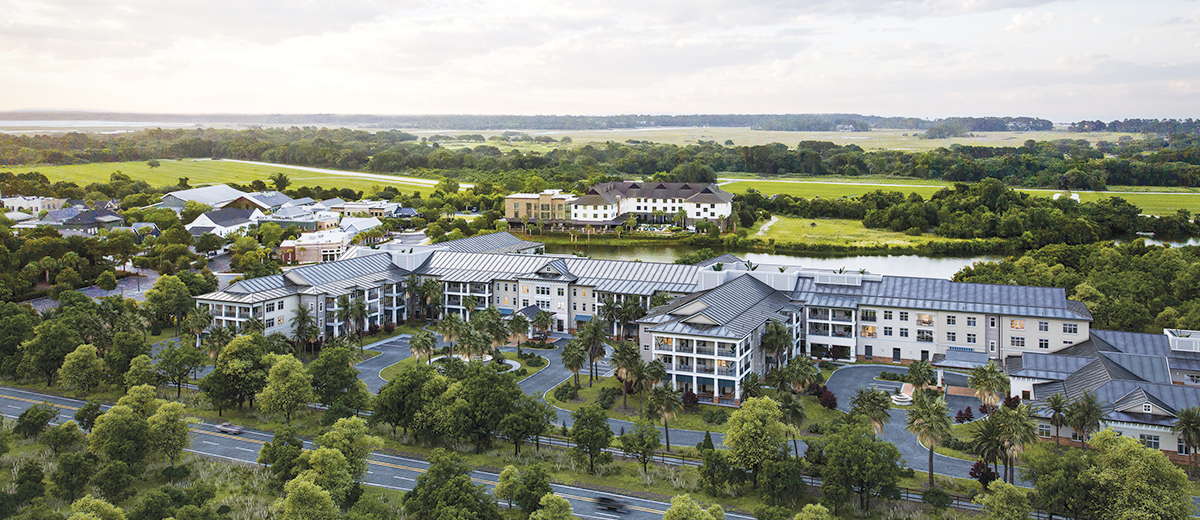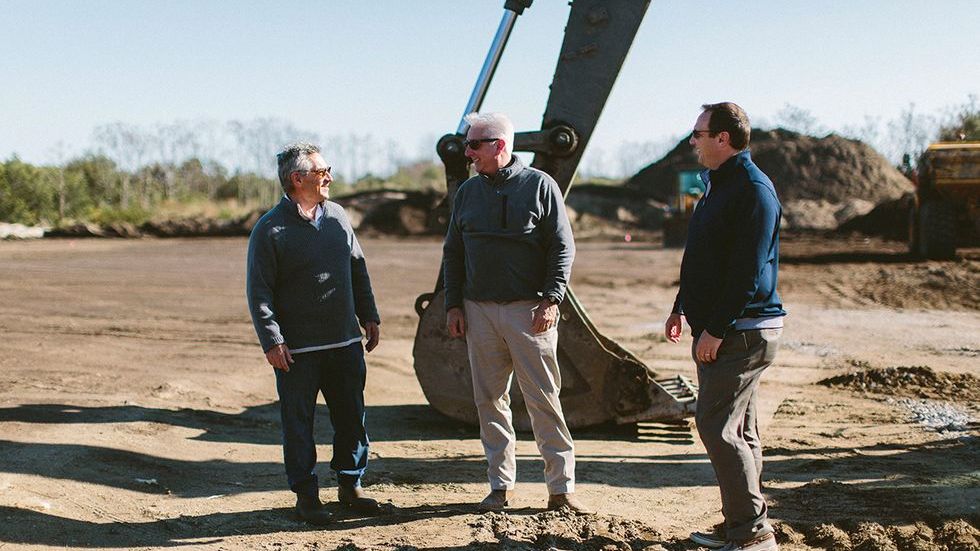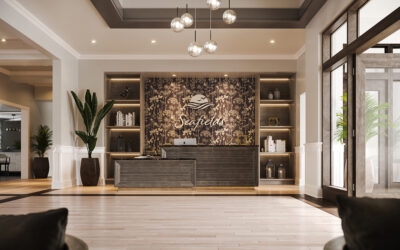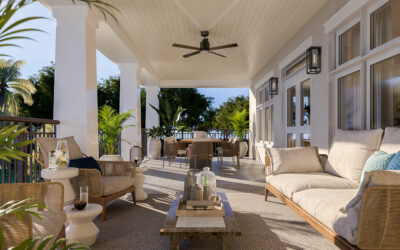Big Rock Partners CEO Richard Ackerman discusses senior housing and the plan for Seafields, Kiawah Island’s new senior living community. The three-story mixed-use seniors housing property will consist of 106 units, including 90 independent living and 16 assisted living units.
Tell me about your professional background.
RA: I’m a lawyer, but my experience is in finance and development. I built a lot of projects in the nineties in South Florida. After the crash, I started working in the public securities market with a real estate investment trust. Then eventually I started doing financial workouts. In the early 2000s, I joined a private equity fund called Apollo Real Estate Advisors. I moved to LA, and I covered the West Coast and Asia, doing all kinds of different real estate investments, including senior housing. I spent a lot of time turning around a senior housing business called Summerville, which was one of the largest in the business at that time. Eventually I left and formed Big Rock Partners, a private equity fund based in Los Angeles. We focused on multiple things, including senior housing, land investment, office development, and hotels. After the crash in 2008, I looked at the landscape across the investment world and tried to figure out what the best opportunity was for my skill set. Senior housing and development is one of the areas I thought I could make a difference. So I put a business plan together to develop modern, mixed-use senior housing and built a firm around it.
You’re considered to be a sophisticated, high-design boutique shop for senior housing. What makes your model different from others?
RA: Sixty to seventy percent of the stock of senior housing in the United States is over thirty-five years old. It’s antiquated and unsophisticated in its design and financing. I built a business around what’s called the new modern—I hate to use the word luxury because it’s overused. We design one-of-a-kind facilities to fit the style of the community. While there are some very good companies doing the same thing, the market was big enough for another player. We’re not trying to build a lot. While other builders do seven or eight projects a year, we have the freedom to do just one project a year.
Tell me about the process.
RA: We set out to build a project that veers away from many people’s preconceived notions of what senior housing looks like. Through spectacular design, we try to create a social environment. It’s no different than the hotel industry or clubhouse design. With Seafields, we’re thinking a lot about the interiors and how to create an environment where people can mingle. We build sophisticated movie theaters, dining venues, and fitness facilities. The buildings are wired with the latest technology. We also spend a lot of time on the operational perspective, because we’ll have up to one hundred employees in the building.

What different levels of care will you offer?
RA: When people think of senior housing, they often think of nursing homes. But this model is predominantly independent living, with a small percentage of assisted living.
Define independent living versus assisted living.
RA: First, you have to be able to live completely independently. You get housekeeping, maintenance, and dining options, but you’re not getting any medical assistance—though we do offer health care in our clinic and assisted living platform. You’re buying into a social package with entertainment, wellness, and dining. With assisted living, we’re managing medications, appointments, and transportation also.
There are a lot of ways to structure the business side of senior housing. Can you tell me about yours?
RA: It’s called a Continuing Care Retirement Community (CCRC). A hundred years ago, a Quaker community west of Philadelphia created a nonprofit model based on the idea that members buy into the organization, and it takes care of them for the rest of their lives. That’s how the idea developed. Seafields is a nonprofit organization. We don’t own it. There are no shareholders, because it’s run for the benefit of the residents. The property is controlled by an independent board of directors chaired by Todd Lillibridge, a seasoned real estate professional who lives at Seabrook. The rest of the board reside on Kiawah and Brays Islands, so they understand the local market and bring years of experience in real estate and corporate governance. Since Seafields is a 501(c)(3), we can finance the development with tax-free bonds. We expect this to be the best senior housing project on the East Coast.
What do you think is the catalyst for starting to plan a move to senior housing?
RA: Usually some kind of life event gets them thinking. They’re focused on what the next ten years of their lives will look like and what they’ll need. Sometimes people bring skilled care into their home. But the thing missing is socialization. In that scenario, they don’t interact with anyone else, which is unhealthy. People who are planners want to be in control of their own decisions. They don’t want to burden their children. And everyone wants to stay here in the Lowcountry.
And now you have MUSC Health across the street.
RA: Yes. The medical facility will be right across the street. Additionally, we made a deal with MUSC to build a clinic inside Seafields—which is amazing in our industry. The clinic will also offer primary care services, telemedicine, and dentistry. The two projects are very complementary.
How did this all come about?
RA: Chris Randolph [South Street Partners] advocated for senior housing [on the Island]. We were introduced through my childhood friend who has a home at Kiawah. Chris toured our existing projects and saw we would be a good fit. He has the long-term vision and sees how Seafields adds value to the Kiawah community. And he really does roll with the punches. We worked together for four years to pull this off!





